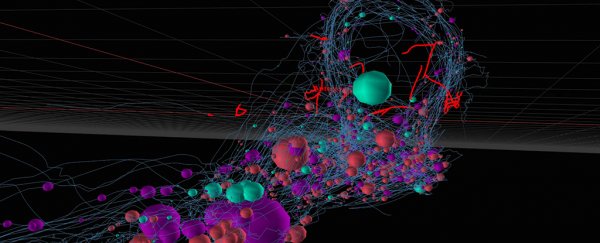Scientists working in the field of connectomics – the study of connections inside the nervous systems of organisms – have announced they've mapped out the complete nervous system of a tiny creature.
The nervous system in question belongs to the Caenorhabditis elegans roundworm, which has a rich history as a model organism: a simple life form that may reveal clues about the biology of more complex animals, including humans.
"Structure is always central in biology," says geneticist Scott Emmons, from the Albert Einstein College of Medicine in New York. "The structure of DNA revealed how genes work, and the structure of proteins revealed how enzymes function."
"Now, the structure of the nervous system is revealing how animals behave and how neural connections go wrong to cause disease."
While previous studies have already mapped out the nervous system of C. elegans quite extensively, the new research goes further by charting every single connection between the nervous system and the rest of the organism, and by covering both sexes of the roundworm - male and hermaphrodite.
The team behind the work used thousands of electron micrographs to build up a picture of their subject – both ones taken for the purposes of this study and an extensive set first collected in 1986.
By the time they'd finished, the researchers had mapped all the connections between individual neurons, all the connections from neurons to muscles and other tissues, and all the synapses between muscle cells (as well as an estimate of the strengths of those synapses).
We've never seen a nervous system structure in such detail before.
"While the synaptic pathways in the two sexes are substantially similar, a number of the synapses differ in strength, providing a basis for understanding sex-specific behaviours," says Emmons.
Adult C. elegans worms are just a single millimetre (about four hundredths of an inch) long, and are made up of only a thousand or so cells. The team's results reveal that the nervous system comprises 302 neurons in the hermaphrodite sex, and 385 in the male sex, with significant differences in both – mainly due to reproductive functions.
Compared with a human being, that's an extremely simple organism – but it's a good starting point to begin to understand how the wiring of any animal is put together, knowledge that could become useful in all sorts of future applications.
And the humble roundworm has more in common with our own species than you might think.
"These connected networks serve as starting points for deciphering the neural control of C. elegans behaviour," says Emmons.
"Since the roundworm nervous system contains many of the same molecules as the human nervous system, what we learn about the former can help us understand the latter."
The research has been published in Nature. You can also see a video explaining the work below.

